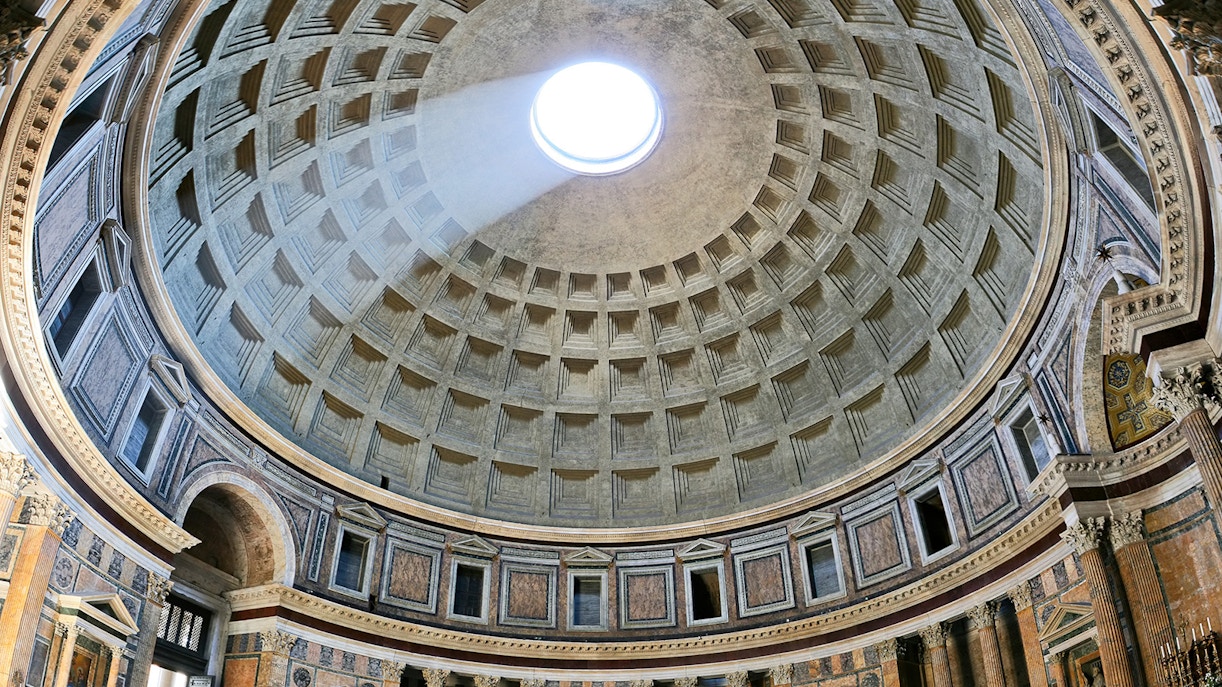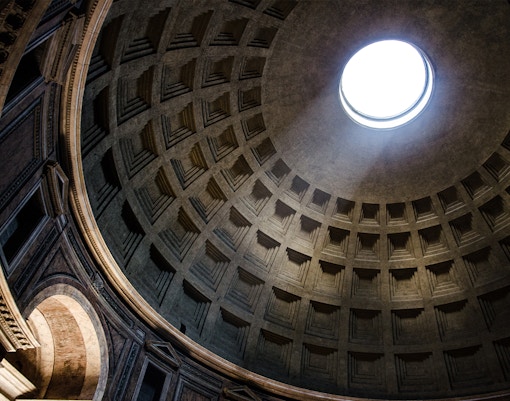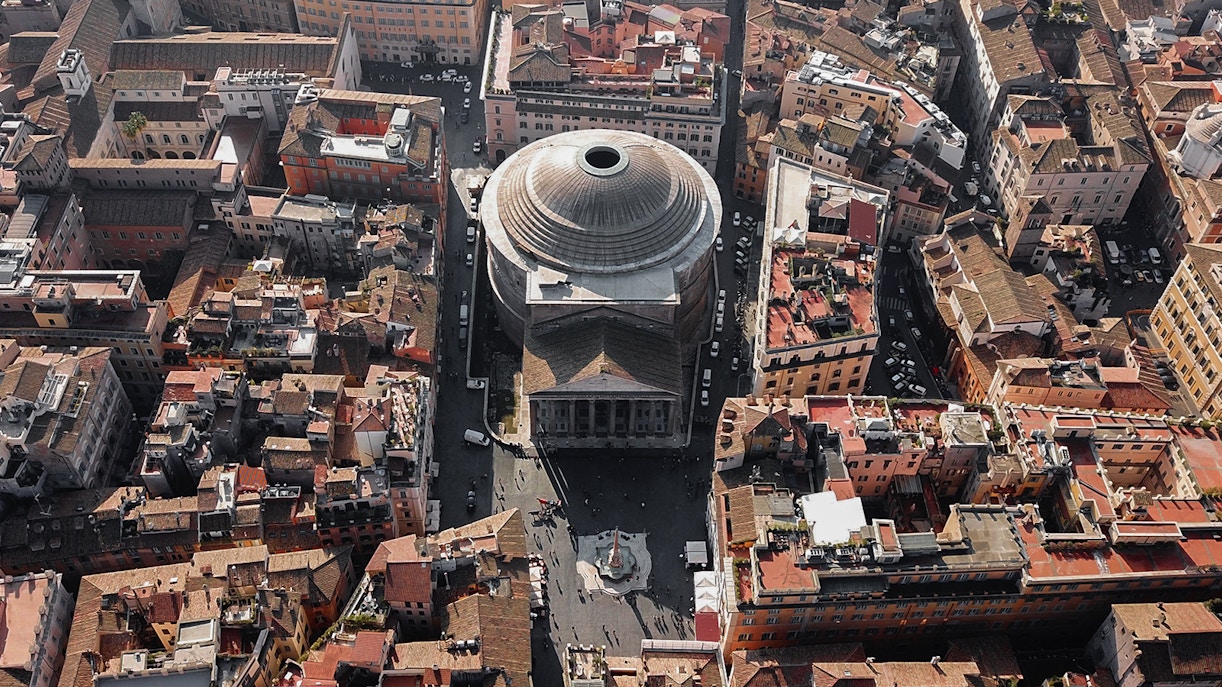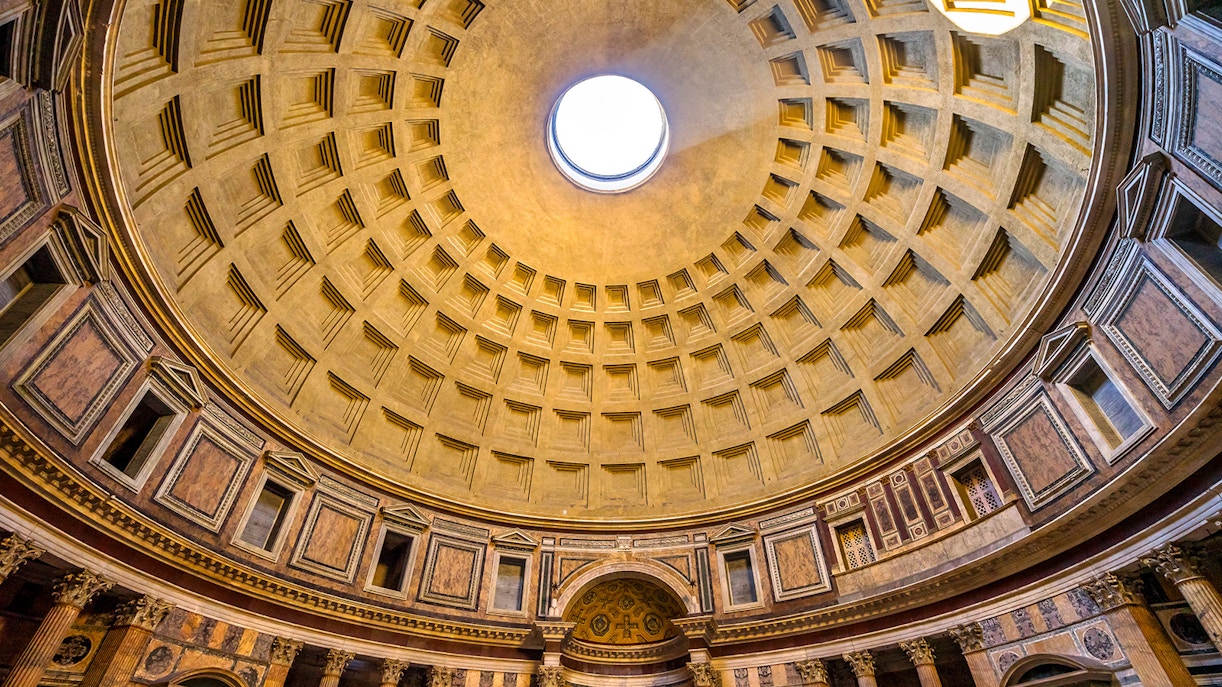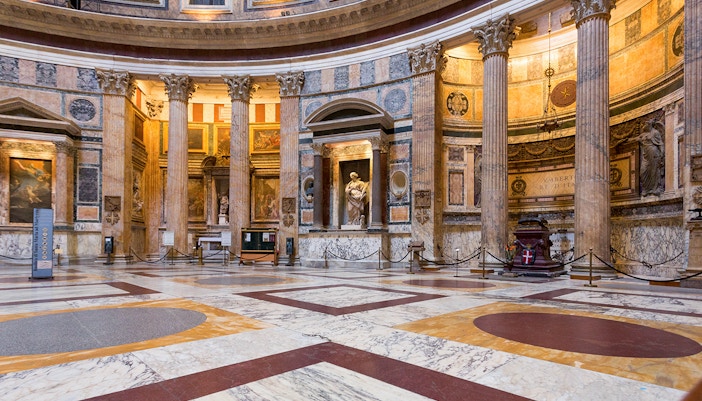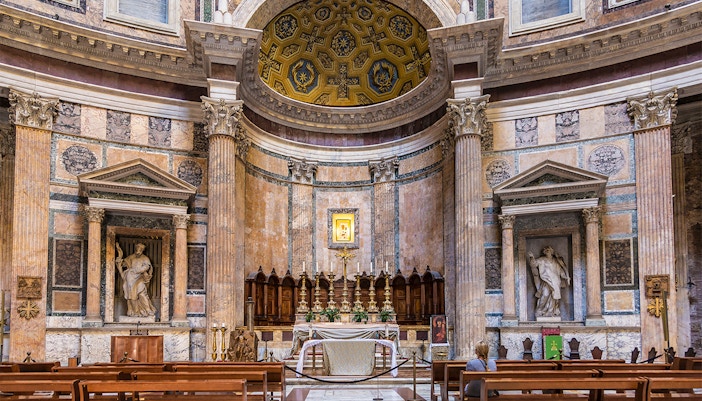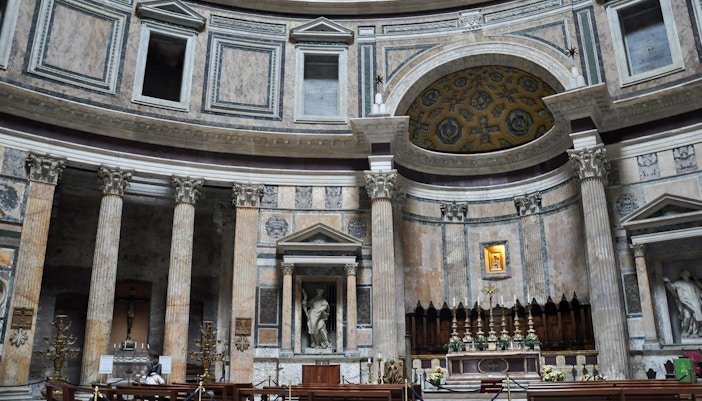- Opening date: Originally built in 27 BC, rebuilt in 126 AD.
- Architect: The original architect is believed to be Apollodorus of Damascus, but the rebuilding in 126 AD is often attributed to Emperor Hadrian.
- Architectural style: Roman, specifically Roman Doric.
- Latin name: "Oculus" means "eye" in Latin.
- Function: It is the main source of natural light within the Pantheon. It also acts as a sundial, casting light patterns inside.
- Special phenomena: During equinoxes, it creates stunning interior displays.

